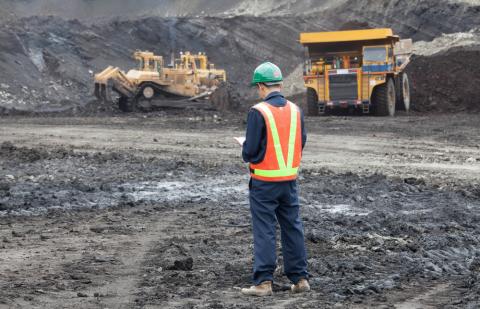Another Problem for Peabody Energy and Company
Today we’re tempted to republish one of the headlines we posted last week: “For U.S. Coal, Market Realities Grow Increasingly Harsh.”
Things haven’t changed much—only for the worse, especially for Peabody Energy, which finds itself now in the spotlight of a federal review of its “self-bonding” program. The practice, noncontroversial during the heyday of the coal industry, is being called into question now because it’s not clear Peabody has the financial wherewithal to deliver on its promise to pay for what could be billions of dollars in cleanup costs from its mining activities.
Self-bonding, which dates from the late 1970s, is supposed to protect taxpayers from paying for the mess coal companies leave behind at abandoned mines.
Patrick Rucker at Reuters did yeoman’s work last week in an article that describes the current dubious quality of self-bonding at Peabody. The article notes also—as we did here last week—that Alpha Natural Resources appears to be in no condition to make good on its self-bonding commitment either.
Here’s how Rucker breaks it down:
“Federal regulations require a mining company of Peabody’s size to have a strong credit rating or robust balance sheet to qualify for self-bonding.”
“Specifically, it must have a ratio of total liabilities to net worth of 2.5 times or less, and a ratio of current assets to current liabilities of 1.2 times or greater.”
“A Reuters review of securities filings found that Peabody failed both those tests at the end of 2014. Arch Coal, the other leading coal company to use affiliates to self bond, failed the liabilities to net worth test.”
Alpha is in trouble on this issue outside Washington, too. Regulators in Wyoming a couple of weeks ago took away Alpha’s self-bonding break because the company’s finances are so weak.
Peabody, Arch and Alpha, like many coal companies, rely on self-bonding as a way around paying market rates on insurance against reclamation costs. Self-bonding is a government subsidy. Company balance sheets are relieved of an ongoing cost for insurance. These regulatory efforts to enforce the law pose a very real financial risk to companies that no longer comply. Rucker notes that the four largest U.S. coal companies—Peabody, Alpha, Arch Coal and Cloud Peak Energy—are depending on self-bonding to pay for a combined $2.7 billion in cleanup costs.
If these companies lose the subsidy, they should, by law, have to buy insurance, and none of them can afford it. Such an expense would only add to their woes, some of which we reviewed in a briefing note we published last week (“Struggling U.S. Coal Companies Face Debt Hurdles, Complications From Reclamation and Pension Obligations, Pressure from Hedge Funds”), and could force some of them closer to insolvency. Of course there is no saying how the companies or the regulators will respond.
Signs of growing distress across the coal industry include the following:
- A recent sharp upturn in layoffs, including at relatively robust stalwarts like Murray Energy. CONSOL has gone on reduced work schedules at some of its operations.
- Stock performance. Peabody, Alpha, Arch and Cloud Peak are all trading at a small fraction of the prices they fetched a few years ago and for all practical purposes have become penny stocks.
- Credit insurance. The cost of credit-default protection has soared. For Arch, for instance, credit-default insurance is trading recently for 300 percent higher than it was last summer.
- Coal-company pension funds are under distress.
- Hedge funds are abandoning coal stocks.
As we close on the second quarter of 2015 we can expect additional reports of financial losses and strained margins.
Expect, too, to see more about the self-bonding question in the news. Because it’s not just a federal issue, it may begin to create state-by-state headaches for the industry.
Where Wyoming’s regulators have gone, other regulators may follow, including those in Colorado, Illinois, Indiana, New Mexico …
Tom Sanzillo is IEEFA’s director of finance.











